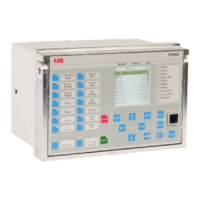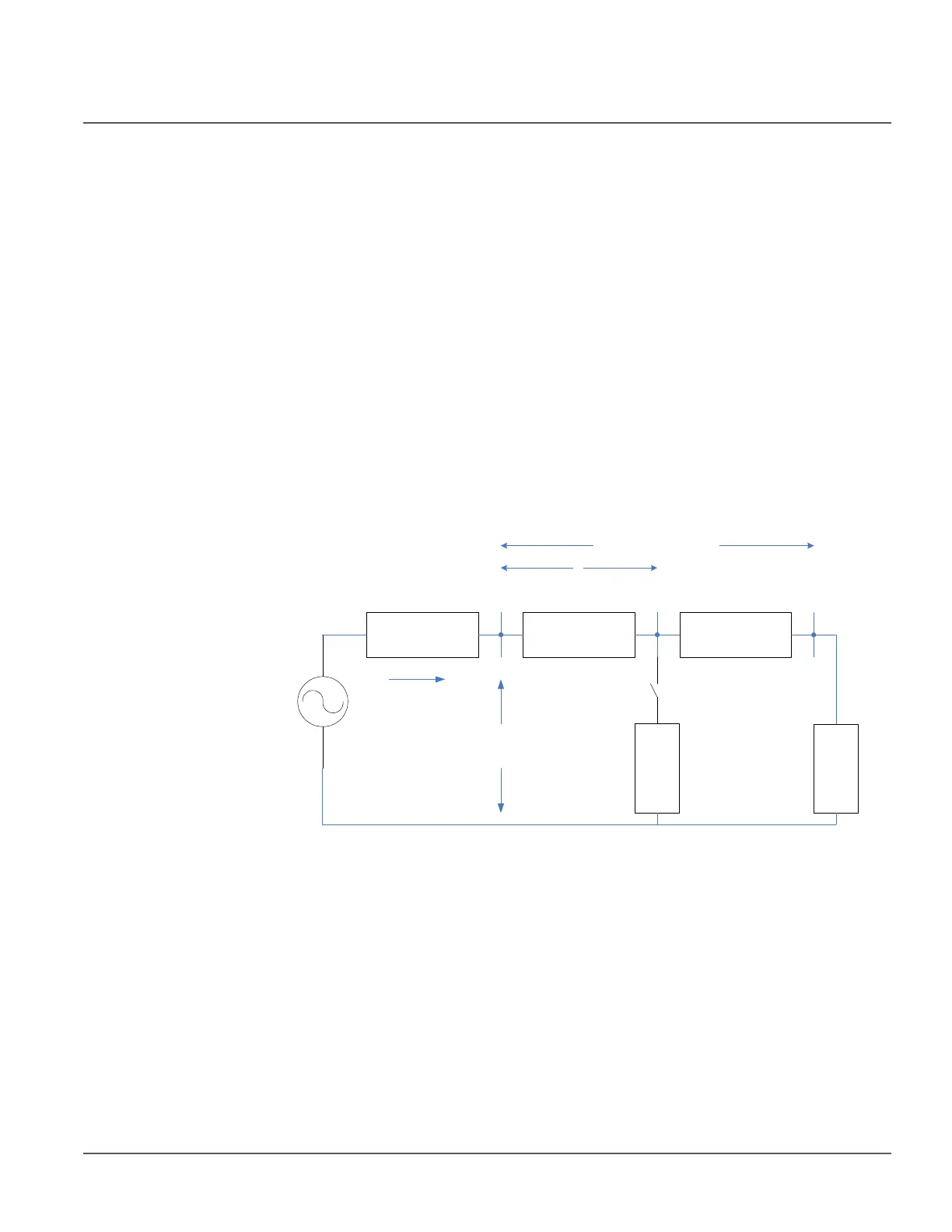1MAC309294-MB F Section 4
Protection functions
RER620 257
Technical Manual
4.5.4.5 Application
Electrical power system has grown rapidly over the last few decades. This resulted in a
large increase of the number of lines in operation and their total length. These lines
experience faults which are caused by storms, lightning, snow, freezing rain, insulation
breakdown and short circuits caused by birds and other external objects. In most cases,
electrical faults manifest in mechanical damage, which must be repaired before returning
the line to service. The restoration can be expedited if the location of the fault is either
known or can be expedited with reasonable accuracy.
Fault locators provide estimate for both sustained and transient faults. Generally transient
faults cause minor damage that is not easily visible on inspection. Fault locators help
identify those locations for early repairs to prevent recurrence and consequent major
damage.
The fault location algorithm is most applicable for radial feeder. The algorithm is based on
the system model shown in Figure 125. The algorithm was designed to be used on a
homogeneous radial distribution line. Therefore the unit is not intended to be used on a
distribution line with many different types of conductors because the algorithm will not be
as accurate. Fault locator algorithm may not be accurate for switch on to fault condition.
Figure 125: System model considered for fault location
Where,
Vs = Source Voltage
Vrly = Voltage at the relay location
Irly = Current in the transmission line at the relay location
Zs = Source impedance
ZL = Transmission line impedance in ohm/unit length
ZD = Load impedance
RF = Fault resistance
Zs ZL*M ZL*(1-M)
ZDRF
Vs
Irly
Vrly
AFB
M
Total Length of the line

